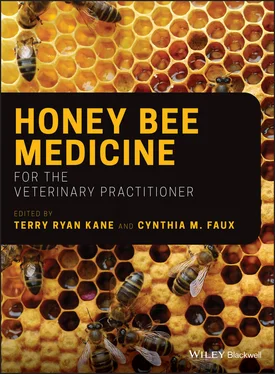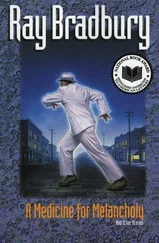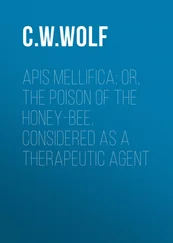Goal 3: Design Apiary as Close to Nature as Feasible
The idea that the “design” of an organism is a product of natural selection, which favors survival and reproduction, is the foundation for modern biology and is the basis for Darwinian beekeeping. The fitness of a honey bee colony is directly related to its ability to survive as a healthy unit and to cast viable swarms and produce fertile drones. It follows that we should aim to help our colonies survive and reproduce, if we want them to be part of a healthy population in the area. This viewpoint is perhaps the most challenging for the beekeeper to adopt because it is, in a sense, a break from managing colonies to maximize their production of goods (honey) and services (pollination). If, however, our goal as beekeepers and bee doctors is to sustain populations of healthy colonies of bees, then we should consider making changes in bee management practices that are in keeping with wild colony biology (Seeley 2017b):
First, keep the number of hives in an apiary to a small number to reduce crowding. High colony density promotes robbing and drifting, and thus the mixing of pathogens among host colonies. This mixing (“horizontal transmission”) can favor the evolution of virulence in pathogens and eventually lead to the collapse of colonies.
Second, keep hive size small to avoid creating colonies with large brood chambers that support large, continually running “assembly lines” of mite reproduction. Seeley (2017b) suggests using one deep hive body for a brood nest and one shallow super over a queen excluder for harvesting some honey.
Third, perform colony splits (as a method to mimic swarming behavior) to initiate a broodless period that creates a break in reproduction by Varroa mites (Loftus et al. 2016). A beekeeper makes a split (a small, new colony) by removing from a colony its queen and some of its worker bees and brood, and putting them in a separate hive. The remainder of the colony, still living in the original hive, then rears a replacement queen.
Fourth, space colonies as widely as possible (>10 m) and face their hives in different directions to reduce the drifting of returning foragers into the hives of neighboring colonies (Seeley and Smith 2015). Artistic beekeepers can also color code their hives or add unique graphic designs (geometric shapes of color work well!) above the hive entrance to help the bees orient back to their own hives. The anatomy and physiology of the bee, which will be outlined in future chapters, will help guide the beekeeper in choosing colors and patterns most suitable to optimize color and shape recognition by returning bees. Honey bees discriminate colors across the range of green to ultraviolet. Hives painted red appear black to bees, and is a poor choice for hive color given that it is the color of a key predator – the black bear –therefore, hives painted in shades of yellows, greens, blues, or pastel colors are more easily distinguished by honey bees compared to ones painted red or purple.
Fifth, hives should provide the bees with a well‐insulated nesting cavity, so that less of a colony's energy is expended on heating and cooling, to achieve thermal homeostasis. The health of a honey bee colony depends on keeping its brood nest at ca. 35 °C from spring to fall, and to keeping the outer layer of the winter cluster above about 10 °C throughout winter.
Finally, bee doctors should avoid treatment of pathogens without a clear diagnosis. A key component of the honey bee environment is the bee's microbiome, which is hidden from view to anyone without a microscope and culture plate. The social behaviors that produce the characteristic flora of the honey bee's gut serve important roles in prevention of disease; the indiscriminate use of antibiotic therapy is known to promote resistance as well as alter the symbiotic gut microbes that underlie the health of honey bee colonies.
Charles Darwin marveled at the honey bee organism and spent a great deal of time studying the organization and structure of their colonies, including the wonderous design of their hexagonal comb. Darwin could not have known the full extent of the threats that the world's honey bees would face in the twenty‐first century – from climate change to mite‐vectored pathogens. But perhaps he had the bees in mind when he wrote: It is not the strongest of species that survives, nor the most intelligent, but the one most responsive to change .
1 Amiri, E., Strand, M.K., Ruepell, O., and Tarpy, D.R. (2017). Queen quality and the impact of honey bee diseases on queen health: potential for interactions between two major threats to colony health. Insects 8 (48): 18.
2 Becher, M.A., Osborne, J.L., Thorbek, P. et al. (2013). Towards a systems approach for understanding honeybee decline: a stocktaking and synthesis of existing models. Journal of Applied Ecology 50: 868–880.
3 Borba, R.S., Klyczek, K.K., Mogen, K.L., and Spivak, M. (2015). Seasonal benefits of a natural propolis envelope to honey bee immunity and colony health. Journal of Experimental Biology 218: 3689–3699. https://doi.org/10.1242/jeb.127324.
4 Brosi, B.J., Delaplane, K.S., Boots, M., and de Roode, J.C. (2017). Ecological and evolutionary approaches to managing honey bee disease. Nature Ecology and Evolution 1 (9): 1250–1262.
5 Chapman, N.C., Lim, J., and Oldroyd, B.P. (2008). Population genetics of commercial and feral honey bees in Western Australia. Journal of Economic Entomology 101 (2): 272–277.
6 Coombs, A.B., Bowman, J., and Garroway, C.J. (2010). Thermal properties of tree cavities during winter in a northern hardwood forest. Journal of Wildlife Management 74 (8): 1875–1881.
7 Cornman, R.S., Tarpy, D.R., Chen, Y. et al. (2012). Pathogen webs in collapsing honey bee colonies. PLoS One 7 (8): 1–15.
8 Darwin, C. (1868). The Variation of Animals and Plants Under Domestication, vol. 2. London, UK: John Murray.
9 De Jong, D. and Soares, A.E.E. (1997). An isolated population of Italian bees that has survived Varroa jacobsoni infestation without treatment for over 12 years. American Bee Journal 137: 742–745.
10 Delaplane, K. (2017). What epidemiology can teach us about honey bee health management. American Bee Journal 157 (4): 419–421.
11 Delaplane, K.S., Pietravalle, S., Brown, M.A., and Budge, G.E. (2015). Honey bee colonies headed by hyperpolyandrous queens have improved brood rearing efficiency and lower infestation rates of parasitic Varroa mites. PLoS One 10 (12): e0142985. https://doi.org/10.1371/journal.pone.0142985.
12 Di Prisco, G., Annoscia, D., Margiotta, M. et al. (2016). A mutualistic symbiosis between a parasitic mite and a pathogenic virus undermines honey bee immunity and health. Proceedings of the National Academy of Sciences 113 (12): 3202–3208.
13 Ellis, J.D., Evans, J.D., and Pettis, J. (2010). Colony losses, managed colony population decline, and Colony Collapse Disorder in the United States. Journal of Apicultural Research 49 (1): 134–136.
14 Engel, P., Martinson, V.G., and Moran, N.A. (2012). Functional diversity within the simple gut microbiota of the honey bee. Proceedings of the National Academy of Sciences 109 (27): 11002–11007.
15 Evans, J.D., Aronstein, K., Chen, Y.P. et al. (2006). Immune pathways and defence mechanisms in honey bees Apis mellifera. Insect Molecular Biology 15 (5): 645–656.
16 Fleming, J.C., Schmehl, D.R., and Ellis, J.D. (2015). Characterizing the impact of commercial pollen substitute diets on the level of Nosema spp. in honey bees (Apis mellifera L.). PLoS One 10 (7): e0132014. https://doi.org/10.1371/journal.pone.0132014.
17 Fries, I. and Bommarco, R. (2007). Possible host‐parasite adaptations in honey bees infested by Varroa destructor mites. Apidologie 38 (6): 525–533.
Читать дальше












